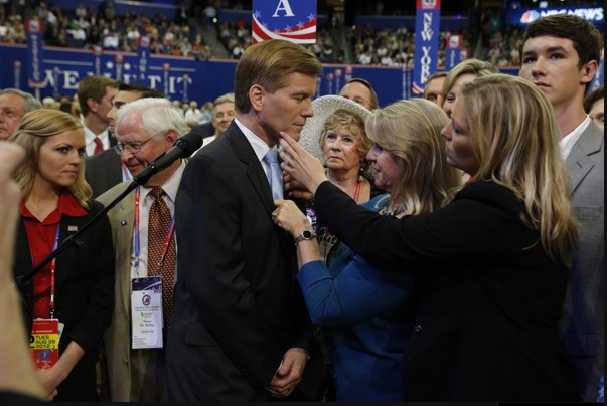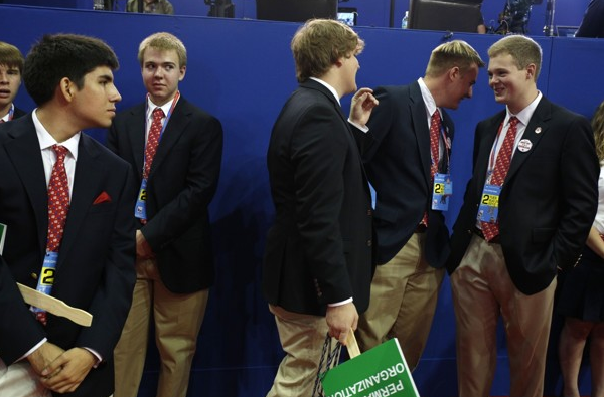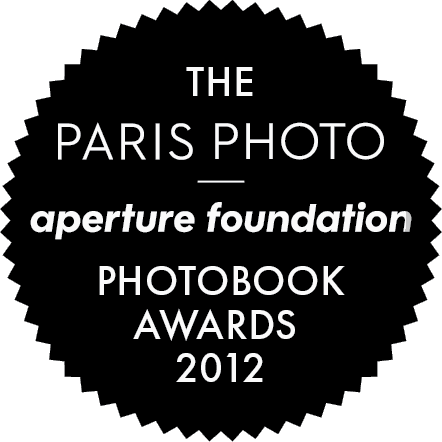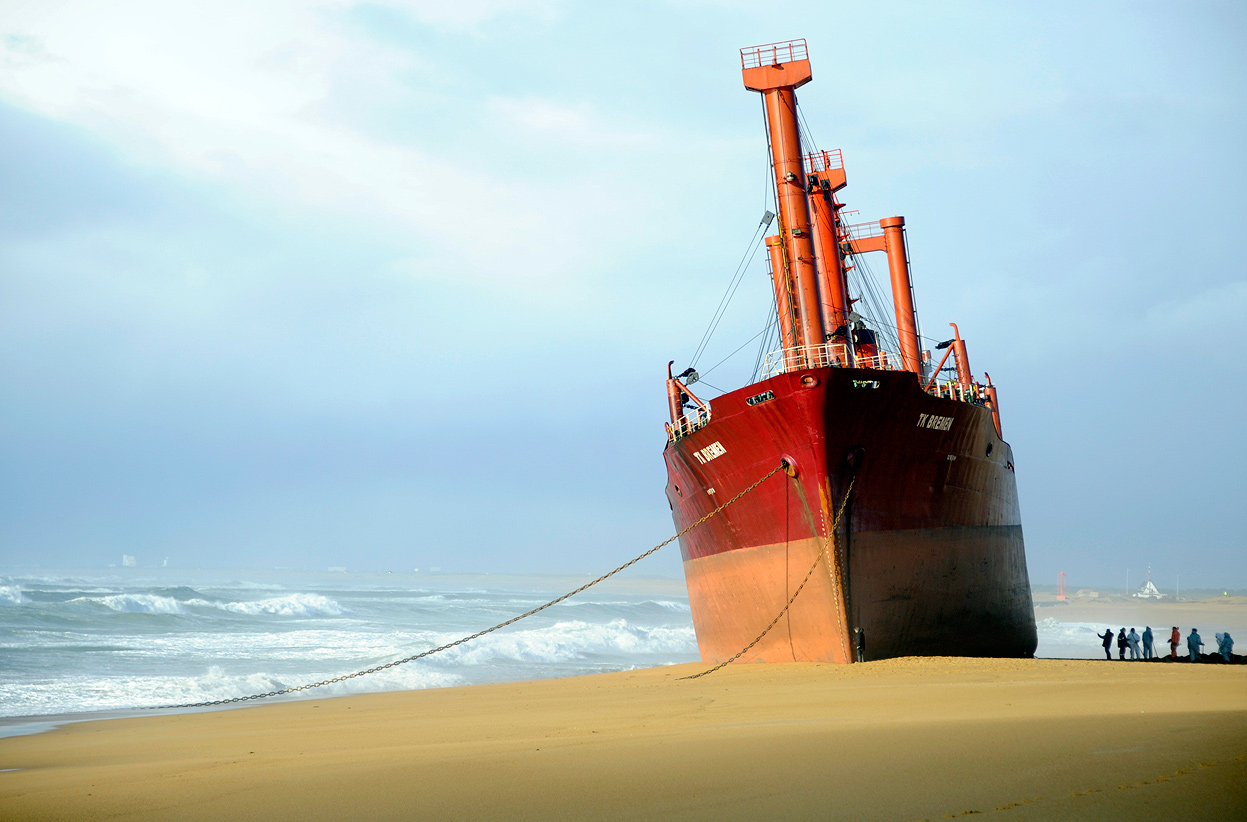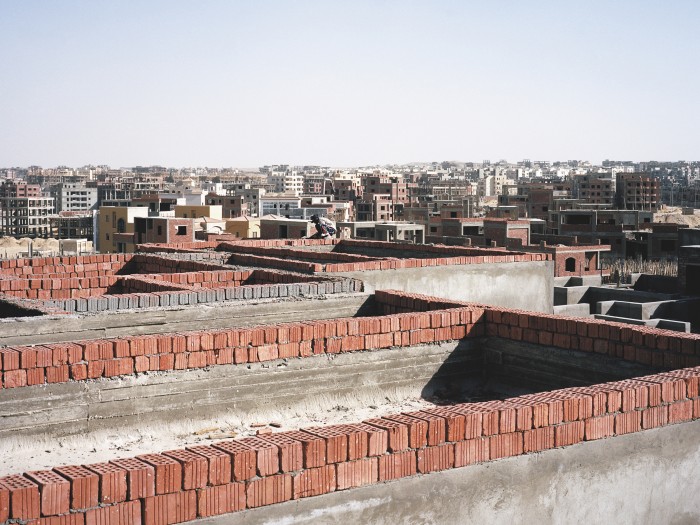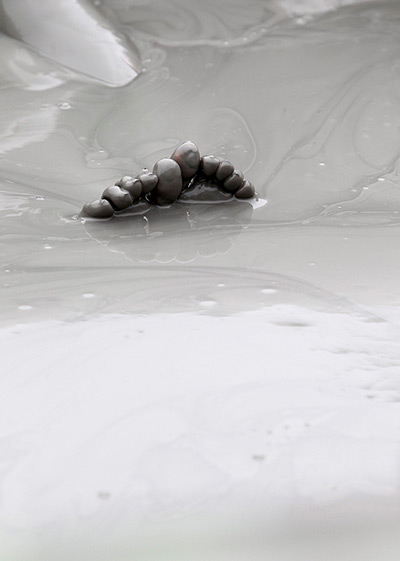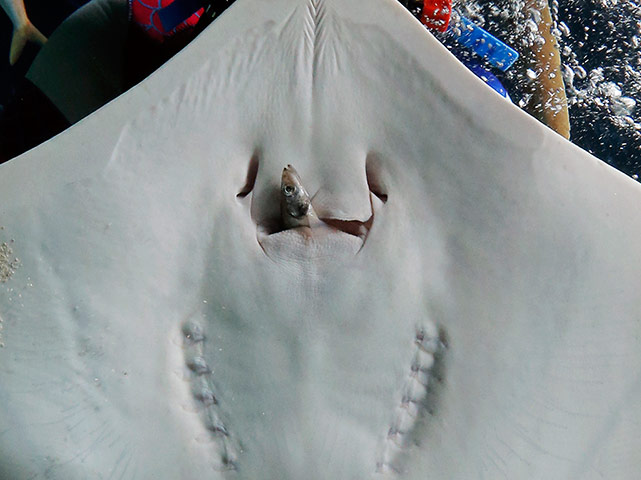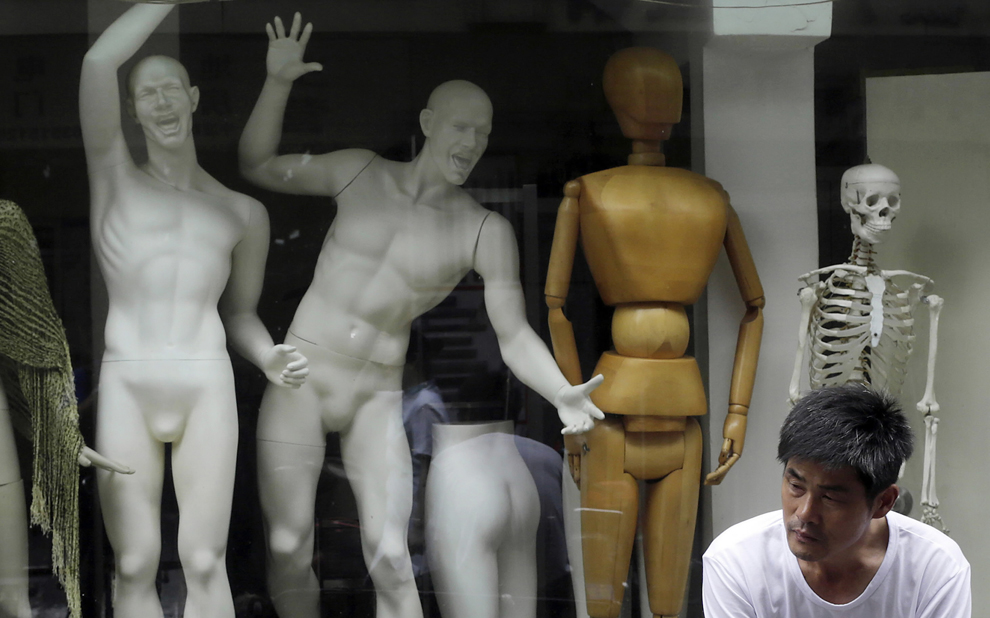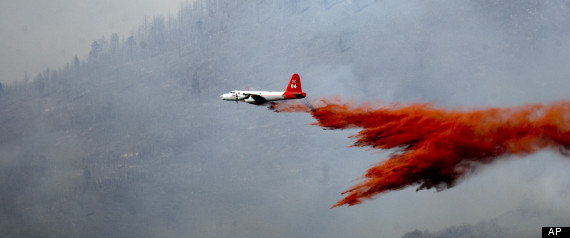Sometimes the facts are right there on the face of things.
I don’t mean to make light of what is almost a touching moment as Virginia Governor Bob McDonnell is being made camera ready by his wife, Maureen. (Nice Scottish name, McDonnell, and Maureen is a fine Welsh name as well.) They will have the skills, and the stress and strain, of any political couple, and this is not about them. But does every woman in the picture have to be blonde?
Photographs are not logical arguments, and any one image is an extremely small, partial view of reality, so there is no need to remonstrate that some Republicans are people of color. We know that, and if there is one black swan then not all swans are white, and if the convention speakers include a Hispanic or two then there is more to the Grand Old Party than a country club of blondes. But when people gather for a specific purpose, the camera can do a good job of identifying how basic tendencies are there to be seen on the surface of things. And because photographs do capture whatever is in front of the camera, they can be very good at revealing what is taken for granted or generally assumed or tacitly required for membership in a social group.
And at least since Richard Nixon’s Southern strategy, there do seem to be some basic demographic tendencies in the GOP. Tendencies regarding, say, race and gender, as you can see in this photo of convention pages.
Nor are those biases likely to go away, as the pages will become leaders for subsequent generations of the party. If there is a party. (I could joke about an all-male party having trouble reproducing, but not all women are alienated yet by its program of gender hierarchy, and the Democrats still have a way to go on that point as well.) Obviously, blonde is in fashion here as well, and in any case a narrow range of cultural conformity is already evident. And if a great many Americans wouldn’t feel comfortable in this crowd, I don’t think their absence would be noticed. With the Romney/Ryan (English/Irish) ticket, the Republicans have doubled down on whiteness.
That’s not how I would build an institution for the 21st century. But I have this crazy idea that America’s beauty emerges from its diversity, and particularly so when everyone can work together to do their part for the common good. When a major political party willfully ignores that idea, their campaign rhetoric can become even more obnoxious than usual.
The letters are colored white, as if to emphasize just who “we” is. But that we didn’t build America or the Tampa Times Forum or the stage sets for the convention; nor do they clean the building at night. Photographers have been challenging this arrogant delusion at least since Gordon Park’s “American Gothic,” which this photograph echoes.
It may be that the Republican Party core commitment goes beyond transferring wealth upward, but it certainly does not yet deserve to become a majority party. To do that, it would have to learn how to live with the rest of the country, not just employ them. The prospects are not good, however, because that would require changes that are more than skin deep.
Photographs 1 & 2 are by Lucian Perkins/Washington Post; no. 3 is by Spencer Platt/Getty Images.
Cross-posted at BAGnewsNotes.
Update: I had forgotten about a previous post that provides more context, verbal and visual, for this one. So, you might want to also read America in Black and White.
